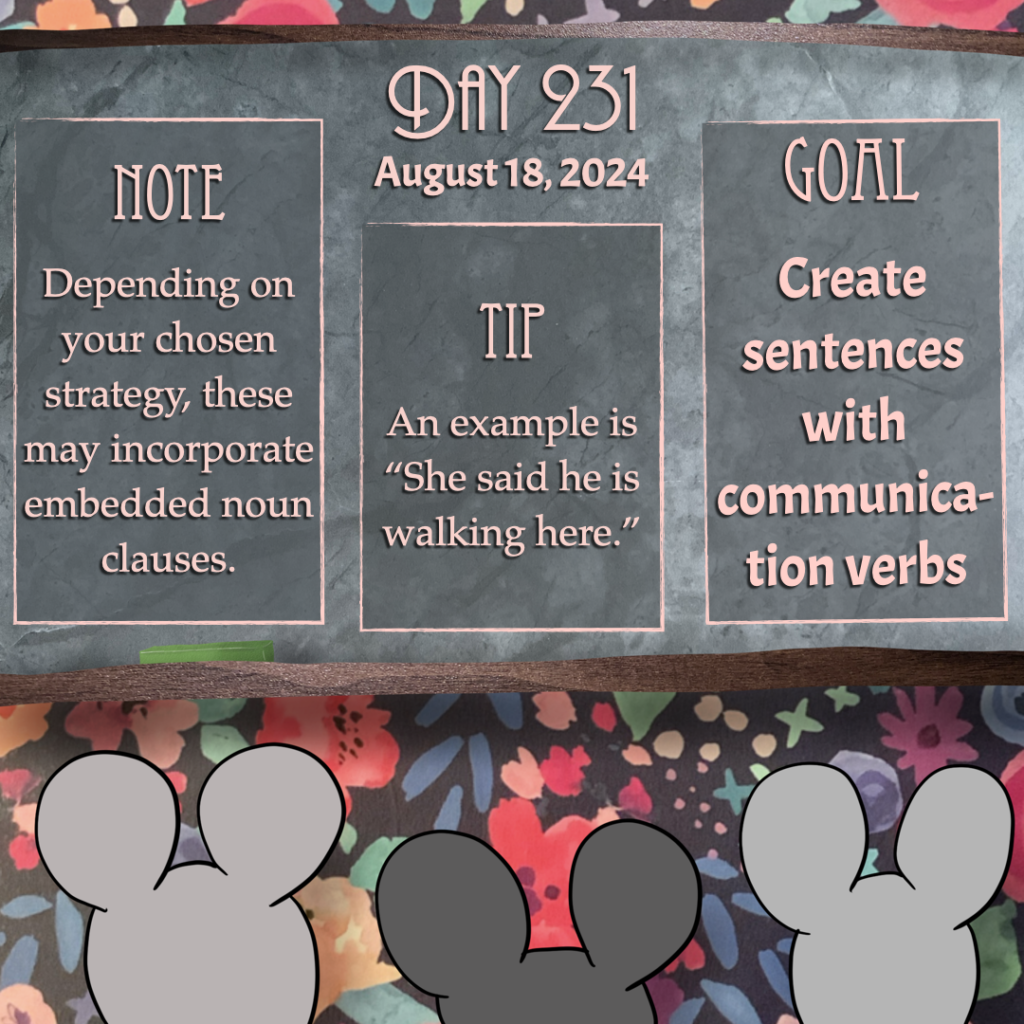
Goal: Create sentences with communication verbs
Note: Depending on your chosen strategy, these may incorporate embedded noun clauses.
Tip: An example is “She said he is walking here.”
Work focus: Create/Make/List
A previous goal had been to figure out how your language handles situations where you might embed a noun clause (or complement clause). In between now and then, you considered other information you might encode on verbs, including conditional and evidentiality. Now, putting the two together, specifically focusing on communication verbs, consider how you might translate something like the following into your conlang…
- She said (that) he is walking here.
- The child said (that) the acorns fell.
- I told her (that) a mouse is in the room.
As these examples demonstrate, English uses an embedded clause structure in these situations, which may be accompanied by an introductory “that” (though it is not required in these situations). The verbs within the embedded clauses are marked for tense/aspect but do not carry other layers of information that could be required by other languages.
For instance, if your conlang marks evidentiality, you may need to mark the verbs of the embedded clauses to indicate whether the speaker has direct evidence of what was said and whether it is true (or trustworthy) information.
Today’s goal is for you to create example clauses like the bulleted ones above to demonstrate how they typically work in your language.
